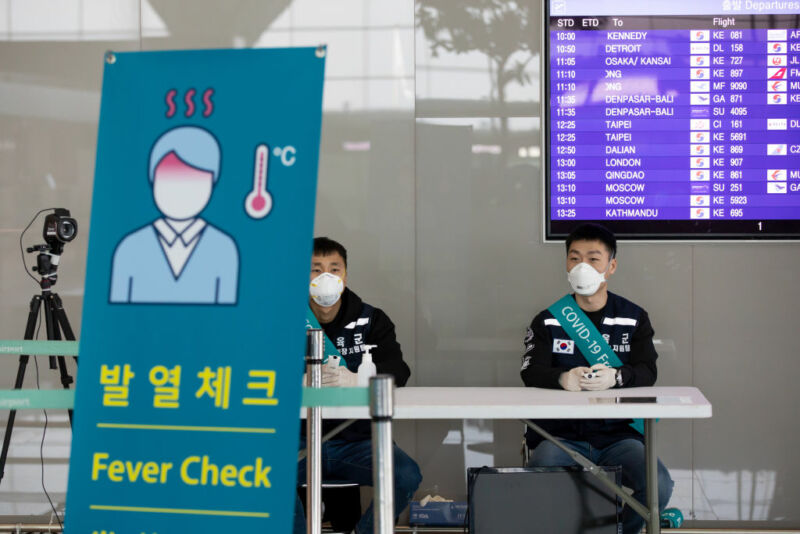Singapore was ready for COVID-19—other countries, take note

Enlarge / South Korean soldiers wearing protective masks sit at a temperature screening point at Incheon International Airport in Incheon, South Korea, on Monday, March 9, 2020. The coronavirus outbreak in South Korea is showing signs of slowing as the rate of new daily infections falls and health authorities almost finished testing members of a religious sect at the center of the epidemic, the country's health minister said. (credit: Getty Images)
This pandemic-the new disease COVID-19, the virus SARS-CoV-2-is not Singapore's first epidemiological nightmare. In 2002 and 2003, Severe Acute Respiratory Syndrome, the original SARS, tore out of China and through Asia, killing 33 people in Singapore and sparking wholesale revisions to the city-state's public health system. "They realized they wanted to invest for the future to reduce that economic cost if the same thing were to happen again," says Martin Hibberd, an infectious disease researcher now at the London School of Hygiene and Tropical Medicine who worked in Singapore on SARS.
So Singapore instituted new travel controls and health infrastructure. Then, in 2009, it got hit again-with H1N1 influenza, the so-called swine flu. "Pandemic flu came from Mexico, an Americas event, and Singapore tried to put in place in 2009 what they learned with SARS," Hibberd says. "But flu was much more difficult to contain than SARS was, and they realized what they thought they'd learned didn't work. It was another lesson."
Read 11 remaining paragraphs | Comments